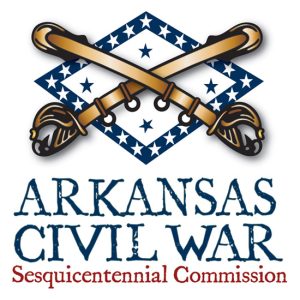calsfoundation@cals.org
Skirmish at Vine Prairie
| Location: | Crawford County |
| Campaign | None |
| Date: | February 2, 1863 |
| Principal Commanders: | Capt. Charles Galloway (US); Col. Caleb W. Dorsey (CS) |
| Forces Engaged: | Company “E” First Arkansas Cavalry (US); Dorsey’s Cavalry Battalion (CS) |
| Estimated Casualties: | 1 wounded (US); 8 killed, 15–20 wounded (CS) |
| Results: | Union victory |
This skirmish occurred as part of a reconnaissance patrol planned by Colonel Marcus LaRue Harrison but commanded by Captain Charles Galloway of the First Arkansas Cavalry (US), designed to eliminate the Confederate guerrilla band led by Peter “Old Pete” Mankins Jr. (whose small irregular unit repeatedly harassed Harrison’s operations in northwestern Arkansas).
On January 31, 1863, Harrison ordered Galloway and eighty-one troopers from Company E of the First Arkansas Cavalry to Huntsville (Madison County) to protect a public convention of approximately 1,000 Unionists and to assist Colonel James M. Johnson in the organization of the First Arkansas Infantry. Afterward, Harrison ordered Galloway toward the Arkansas River in pursuit of Mankins.
On February 2, 1863, Galloway entered Ozark (Franklin County) rather than proceed as ordered to the canebrake at the mouth of the Mulberry River. Galloway hoped to capture three Confederate steamboats and 100 Rebel soldiers rumored to be at Ozark. He apparently received erroneous information as to the absence of Confederates at the canebrake and, thus, also failed to surround it as originally ordered by Harrison. Galloway made no contact with the enemy or steamboats at Ozark and continued on the Stage Road toward Van Buren (Crawford County).
At White Oak Creek, seven miles west of Ozark, a steamboat escort of 180 Confederate cavalrymen from Colonel Caleb W. Dorsey’s Cavalry Battalion attacked Galloway’s advance guard, commanded by Lieutenant James Roseman. After a short exchange, Roseman’s forces withdrew to a commanding position and re-formed alongside Galloway’s main column. Dorsey’s troopers gave a loud Rebel yell and charged the Federal position until checked by a volley at a distance of 150 yards. Severe fighting continued at this position for approximately thirty minutes and ended with a Confederate retreat described as disorderly, although they managed to carry off their dead and wounded. Galloway pursued Dorsey’s forces westward for approximately ten miles and eventually forced them to scatter.
Federal casualties included one trooper wounded as well as two horses killed. Confederate loses included eight men killed and an estimated fifteen to twenty wounded, along with six horses killed and several others disabled.
That night, Galloway’s forces camped near the mouth of Little Frog Bayou Creek. The next morning, February 3, 1863, Galloway returned to Fayetteville (Washington County), leaving Captain Robert E. Travis to make an unsupported (but partly successful) attack along the Mulberry River near the canebrake against a log house occupied by thirty members of Mankins’s band.
Although somewhat successful, Galloway’s disregard of Harrison’s orders reduced the operation’s chances to achieve its goal of eliminating Mankins’s band. For disobedience of orders and leaving Travis without support, Galloway received an official reprimand from Harrison. Harrison, however, did not have Galloway officially arrested and tempered his criticism with praise for Galloway’s previous skill and courage as commander of the regiment’s scouts.
For additional information:
Bishop, A. W. Loyalty on the Frontier, or Sketches of Union Men of the Southwest; with Incidents and Adventure in Rebellion on the Border. St. Louis: R. P. Studley, 1863.
Furry, William, ed. Preacher’s Tale: Civil War Journal of Rev. Francis Springer, Chaplain, U.S. Army of the Frontier. Fayetteville: University of Arkansas, 2001.
Huff, Leo. “Guerrillas, Jayhawkers and Bushwhackers in Northern Arkansas during the Civil War.” Arkansas Historical Quarterly 24 (Summer 1965): 127–148.
The War of the Rebellion: A Compilation of the Official Records of the Union and Confederate Armies. Series 1, Vol. 22, part 1. Washington DC: Government Printing Office, 1888.
Robert Patrick Bender
Eastern New Mexico University–Roswell
 Civil War Timeline
Civil War Timeline Military
Military ACWSC Logo
ACWSC Logo 



Comments
No comments on this entry yet.